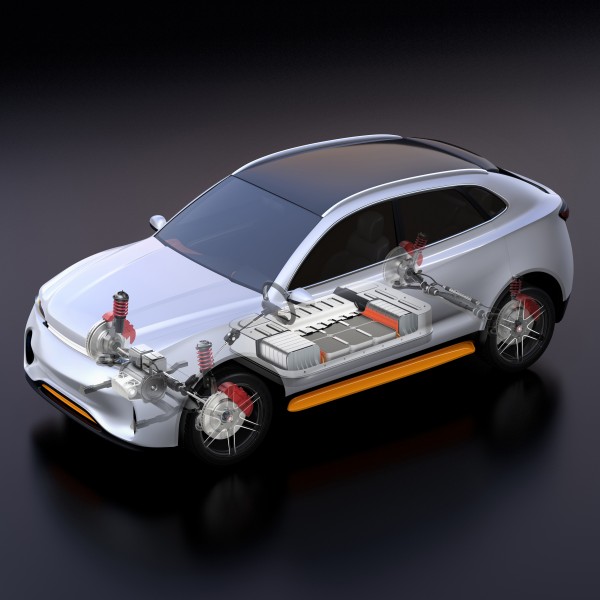The electric vehicle (EV) market is growing rapidly, and the demand for batteries to power these vehicles is increasing just as quickly. According to a recent report, the market for electric vehicle batteries is expected to grow at a compound annual growth rate (CAGR) of 25% from 2020 to 2030.
In fact, the total value of the market is expected to reach US$154.90 billion by 2028, up from just US$39.39 billion in 2019, according to research by the International Energy Agency.
With this rapid growth comes the need for new battery manufacturing facilities to meet demand. These factories require state-of-the-art equipment to produce the batteries, including Weld Fume and Dust Collection Solutions to overcome the challenges posed by industry manufacturing processes.
In this article, we'll be looking at the challenges and opportunities posed by the rapidly growing electric vehicle battery market and what dust collection manufacturers can offer to help overcome those challenges.
EV Battery Factory Growth Global Numbers

Electric vehicle use and production have ballooned in recent years. In just two years, sales of EVs rose by an astounding 186%, driven by increased consumer awareness of the benefits of EVs, as well as government incentives.
Electric car sales have risen from 1 percent of the global car market to 9% in just the last two years. Nearly every major automotive manufacturer has electric vehicles in production or in the works.
However, it's not just private electric vehicles that are on the rise. The commercial electric vehicle market is also rapidly expanding. The use of electric vehicles in mining, in particular, has seen a lot of recent growth. This is in large part due to the fact that electric vehicles produce far fewer emissions than their diesel counterparts.
Of course, all of these EVs need batteries, and that's where things start to get interesting. In order to keep up with the need, Lithium-Ion (Li-Ion) battery-producing capacity will need to more than double by 2025. While this represents a huge opportunity for the battery industry, it also creates some challenges that need to be overcome.
EV Battery Factory Considerations

Ramping up production at a Li-Ion giga-factory is no simple task. In order to produce batteries at the scale needed to power millions of EVs, a number of considerations need to be taken into account.
First, there's the cost. A single Li-Ion battery giga-factory can cost upwards of US$5 billion to build. That's a significant investment, and it's one that needs to be carefully considered.
Second, there's the issue of raw materials. A giga-factory will require a massive amount of lithium, cobalt, and other materials. Ensuring a steady supply of these materials is critical to the success of the factory.
Third, there's the question of consistency. Rapidly increasing production means that quality control can suffer. Ensuring that the batteries produced are of the highest quality is essential to the success of the factory.
This last factor is crucial as poor quality batteries could lead to safety issues. A giga-factory needs to have the highest standards in place to ensure that the batteries produced are safe and work properly.
Ensuring consistent production comes down to having reliable equipment with accurate specifications. Reliability and consistency are key to scalability and the ability to iterate the building process.
By investing in hardware that has a track record of reliability, a giga-factory can avoid issues that would otherwise slow down production.
In order to meet the demand for batteries, a giga-factory needs to be able to produce them quickly and efficiently. This means having a well-oiled machine that runs like clockwork.
Every aspect of the process needs to be optimized to meet production targets. This includes the design of the factory itself, the layout of the equipment, safety considerations, and the use of automation.
Addressing Regulatory and Industrial Hygiene Challenges

Connected to the need for consistency in scalable production is the need to maintain compliance with safety and environmental regulations.
This can be a challenge, as many of the chemicals used in battery production are hazardous. In particular, the combustion and fume concerns posed by lithium metal batteries are significant.
Weld fume is also a concern in battery manufacturing. The fumes produced during welding are considered toxic and over time cause serious health problems if not properly mitigated. Weld fume extraction is a critical control measure in battery manufacturing to help protect workers and increase employee satisfaction.
Regulation of electric vehicle battery manufacturing in the US is handled by OSHA, the Environmental Protection Agency (EPA), and the National Highway Traffic Safety Administration (NHTSA). These agencies have established specific regulations to protect workers and the environment from the hazards associated with battery manufacturing.
In Europe, electric vehicle battery manufacturing is regulated by the European Commission’s Directorate-General for Internal Market, Industry, Entrepreneurship, and SMEs. The European Commission has established a set of health and safety standards for all industries, including the battery manufacturing industry.
In China, the electric vehicle battery manufacturing industry is regulated by the Ministry of Industry and Information Technology (MIIT). The MIIT has established a set of national standards for the electric vehicle battery manufacturing industry.
While these standards differ from country to country, the primary standpoints, covering respiratory protection, the use of lead, and the use of toxic and hazardous substances, are very similar.
Underneath these agencies are multiple local governments that also have their own set of rules and regulations, which may vary from the national ones.
Battery manufacturers face a long, complicated list of multiple agency regulations, at both the national and international levels, that they must adhere to. Failure to comply with any of these regulations can lead to hefty fines, or in extreme cases, the shutdown of the factory.
Weld Fume and Dust Collection Solutions

Weld fume and dust collection is a key concern for battery manufacturers due to the health and production-related hazards posed by manufacturing processes. Implementing effective fume and dust control solutions enables factory owners to maintain consistent production rates that meet increasing demand levels.
As production expectations ramp up, manufacturers need to invest in customized, high-quality dust, fume, and mist control equipment and ancillary products that are designed as part of an overall strategy to meet performance expectations.
Investing in reliable, top-tier dust collection equipment has benefits that go beyond protecting employees. A robust dust control program can lead to increased productivity, less unplanned downtime, and greater employee satisfaction. It’s a win-win for everyone involved.
And that's where Donaldson comes in. With 25 years of experience in the field of dust, fume, and mist control, we know a thing or two about helping process owners meet production requirements.
Our weld fume extraction and dust collection products are modular, so you can create a system that’s customized to your specific needs. And our team of experts is always on hand to provide support and guidance, ensuring that your equipment is up and running smoothly.
As a leading provider of industrial air filtration solutions, Donaldson is well-positioned to provide the necessary equipment for these new battery factories. Our experience in welding fume collection, as well as our global reach, makes us the ideal partner for electric vehicle battery manufacturers.
Whether you’re looking for a turnkey solution or just need some help getting started, Donaldson is your partner in providing clean air for a healthier workplace.




